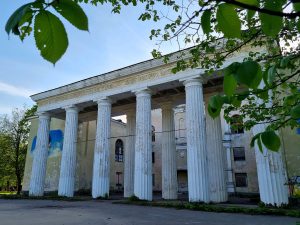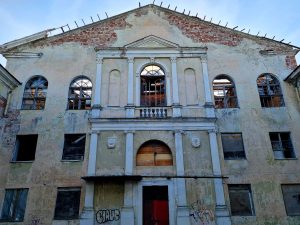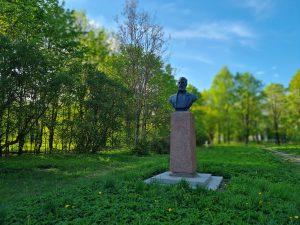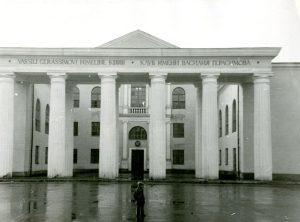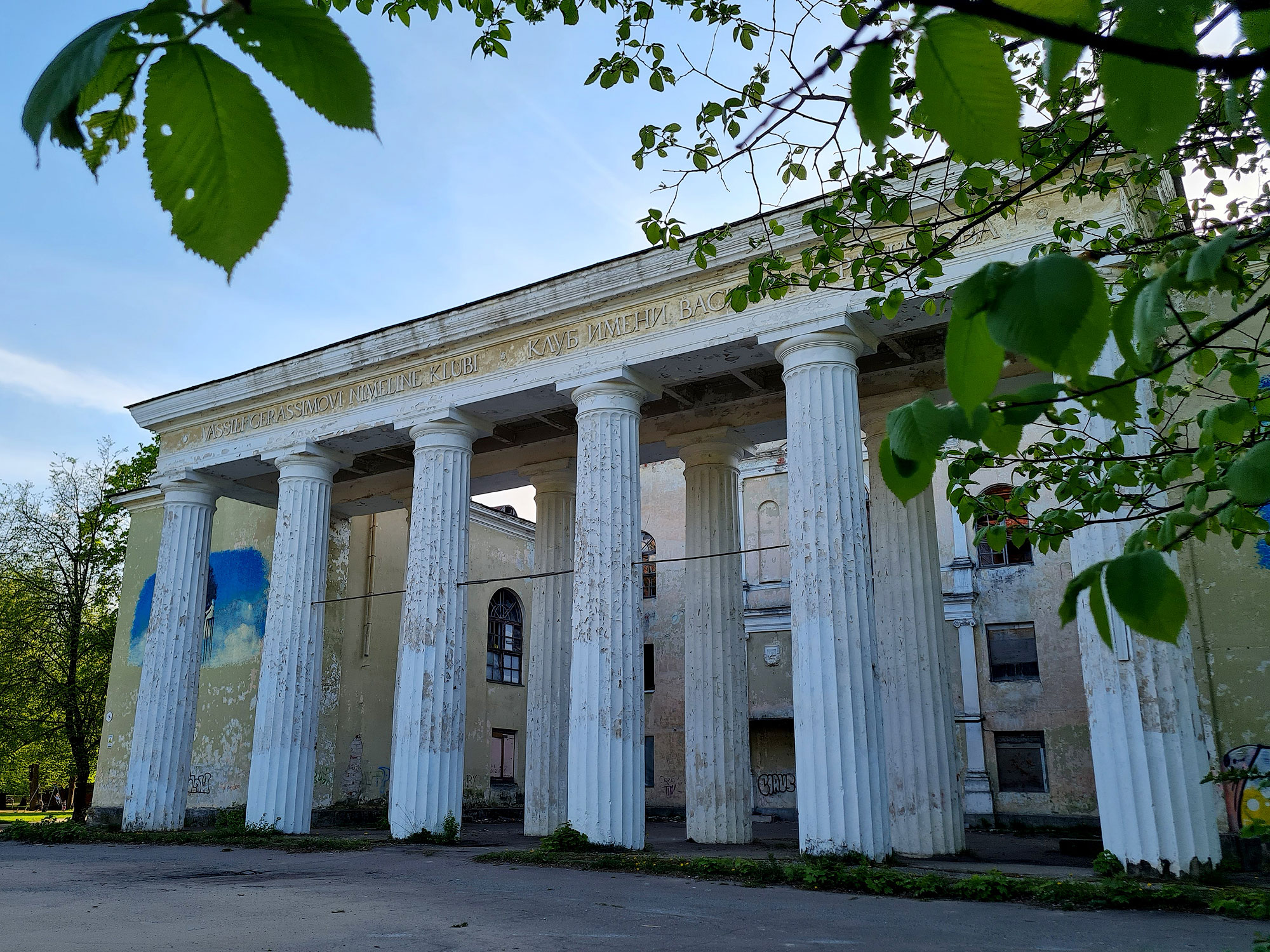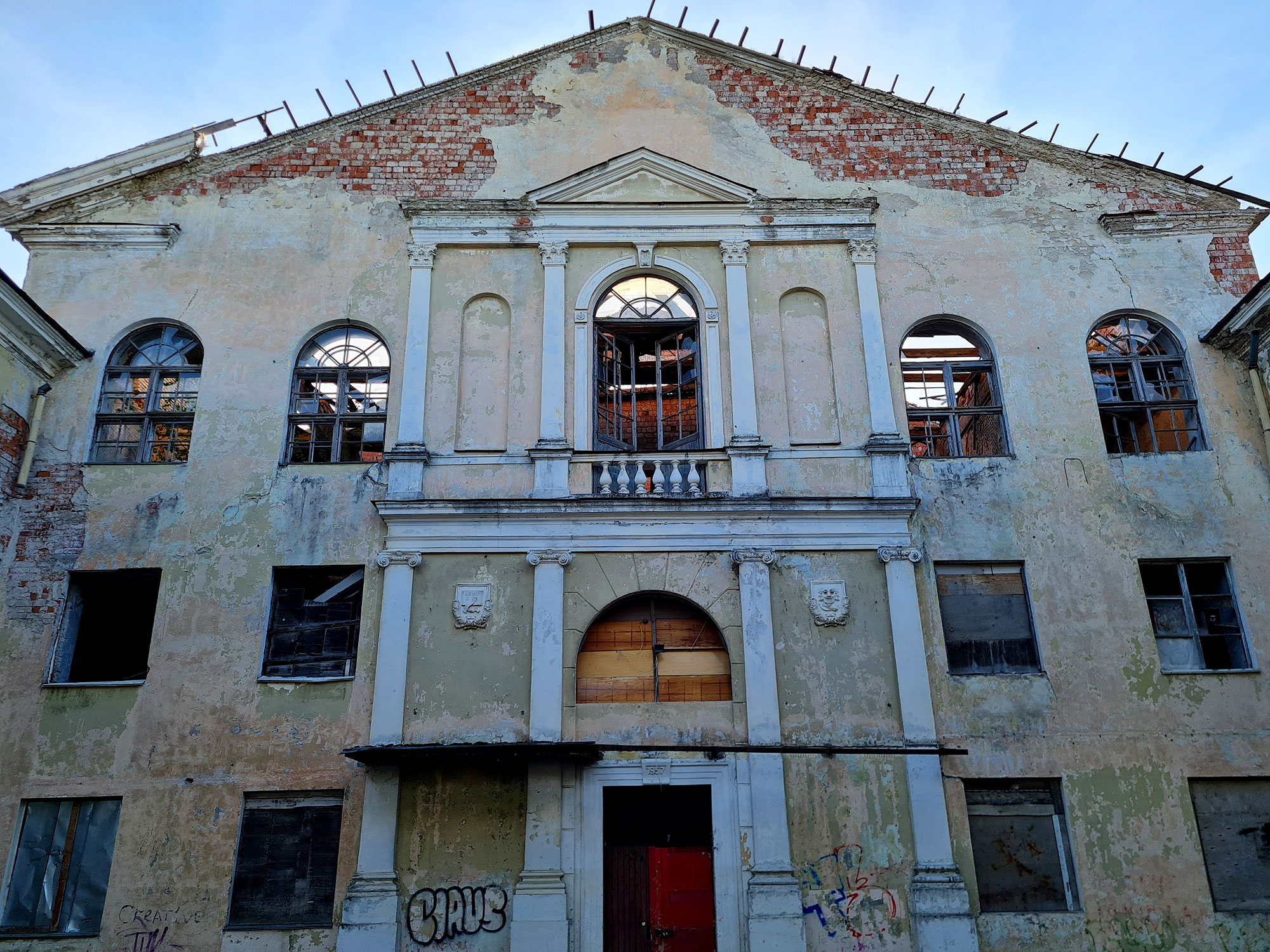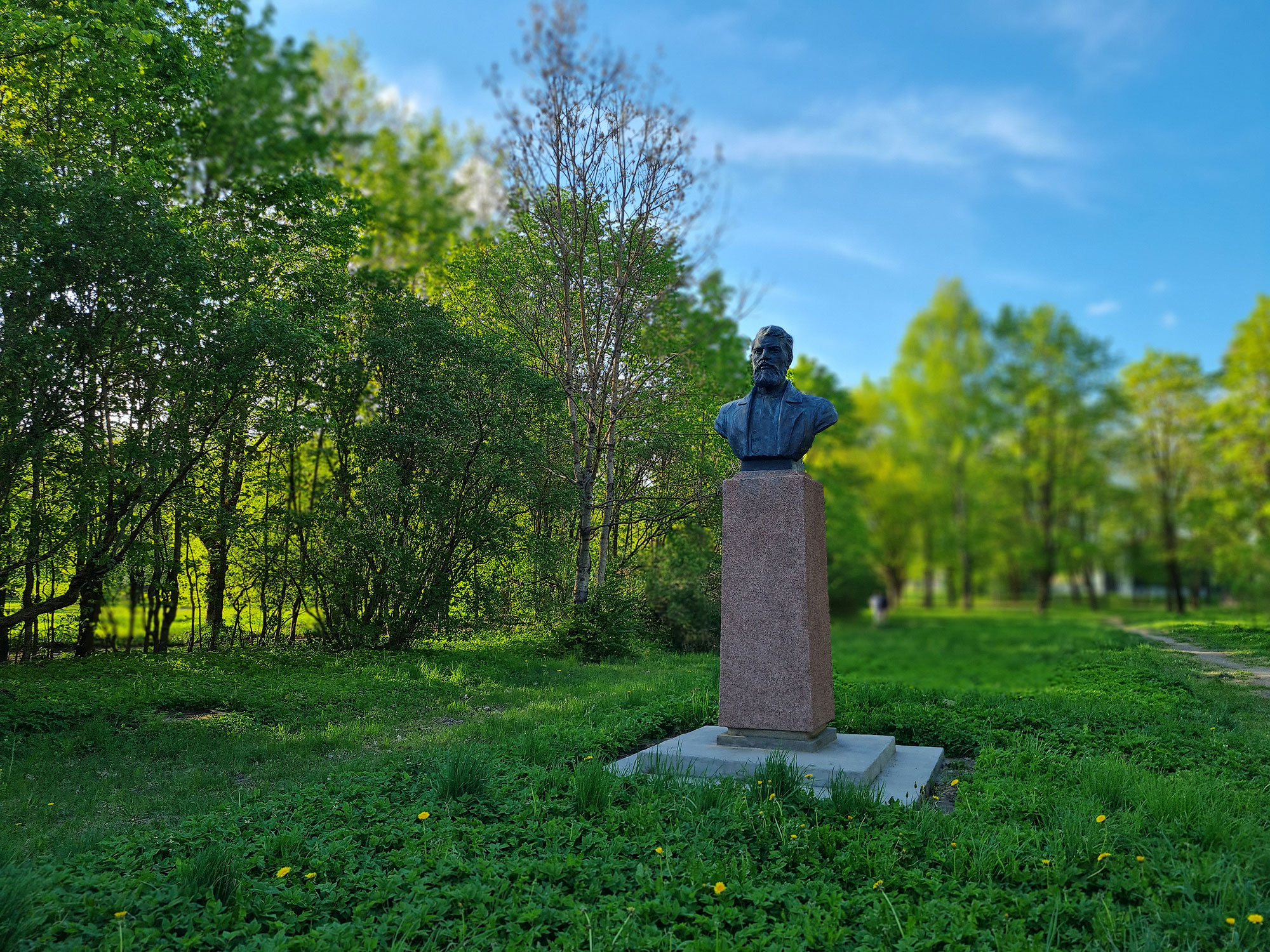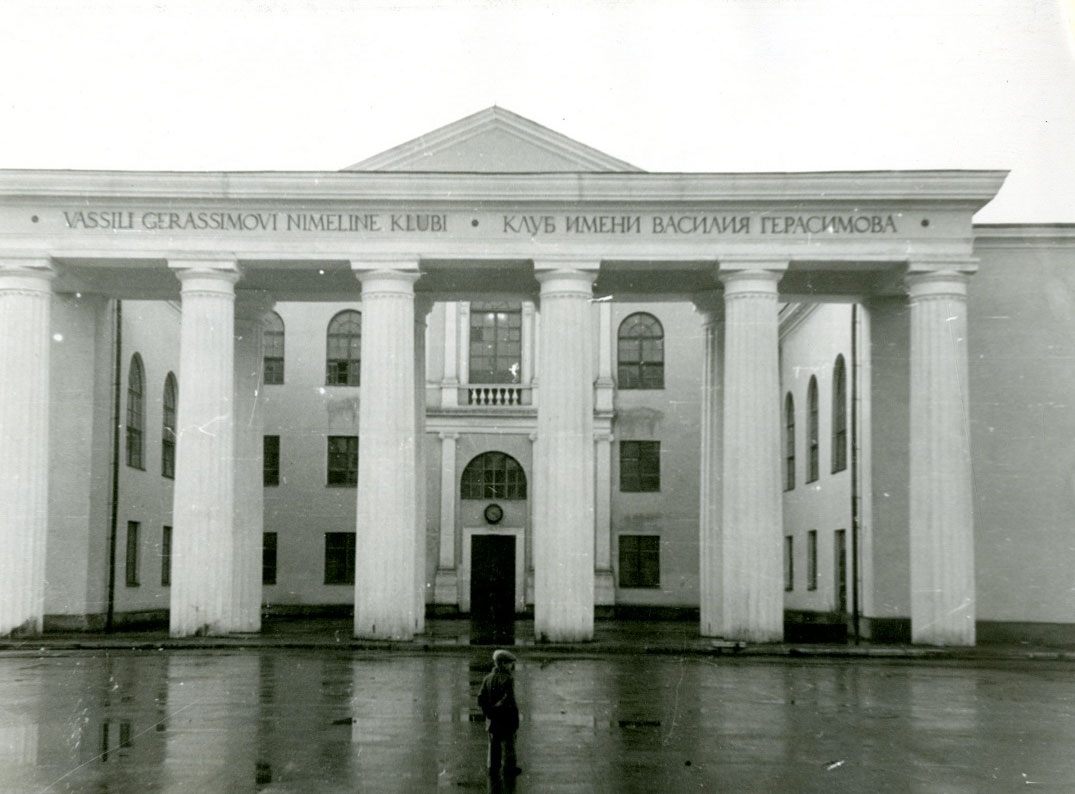The House of Culture of Textile Workers, which locals lovingly call Geraska, was built in 1957 for the 100th anniversary of the Kreenholm Factory and the 40th anniversary of the October Revolution. This is one of the most majestic buildings in Estonia. It was built according to a standard building plan referred to as Stalinist style. The nearest building, constructed under the same project, is located on the other side of the border in the town of Slantsy, Russia. The house was designed in the late 1940s by Ukrainian architect Konstantin Bartashevich. Admittedly, the maintenance of this building, intended for the southern regions of the Soviet Union, was difficult in our climate.
Geraska is still alive in the hearts of all Narva residents aged over 50. The House of Culture had a spacious hall for 600 people, a cinema hall, and was a home for various amateur hobby groups and clubs. Near the building there was one of the most popular open-air dance floors in the city. In the 1970s, this kind of entertainment became extinct and was replaced by discoteques.
Vasily Gerasimov, who the House of Culture was named after, was a revolutionary textile worker who grew up in an orphanage and came to Narva in 1864 when he was 14 years old. Child labor was fairly common until the beginning of the 20th century, and textile production was not considered to be a woman’s occupation at all. The bust of Gerasimov still stands in front of the building.
Only the powerful columns and walls of the house of culture have survived. The structure was damaged by fire which broke out inside several times. At the moment, it is privately owned, and about once a year the idea of opening a water center or a casino is brought up. Then the chatter dies down until the next year.
Every respectable city has its own song. Today Narva is known in Estonia from the song of the rapper Nublu, which tells about a beautiful girl from Narva and also about Kreenholm. Everyone in Estonia knows “Privet gorod Narva” (Hello, the city of Narva).
Of all songs about Narva, Raymond Valgre’s “Narva Waltz” is the one most likely to have been heard in Geraska itself. The first lines of the waltz are “We have many cities in Estonia, many songs have been written about them”. It was written at the end of the Second World War. During this time, Valgre was playing the accordion in the jazz orchestra of the Estonian Rifle Corps and was in Narva from July to the beginning of September 1944. At that time, orchestra rehearsals were held in the ruins of the Kreenholm Factory, on the attic floor, directly under the open sky, often with German bullets whistling overhead. The lyrics of the song “about thousands of good and lovely girls of Narva” refer to the fun evening and night hours, which are summed up by the chorus of the song:
“So believe me, my dear friend
if possible, propose a woman from Narva!”.
After the war, Narva was a city of brides. Some young girls came here from orphanages. Others fled from hunger both from locations near Narva and from the Pskov region (Russia). They restored Kreenholm, and later worked as weavers. Men began to come to Narva in large numbers only in the late 1950s, when the construction of the power plant began.
